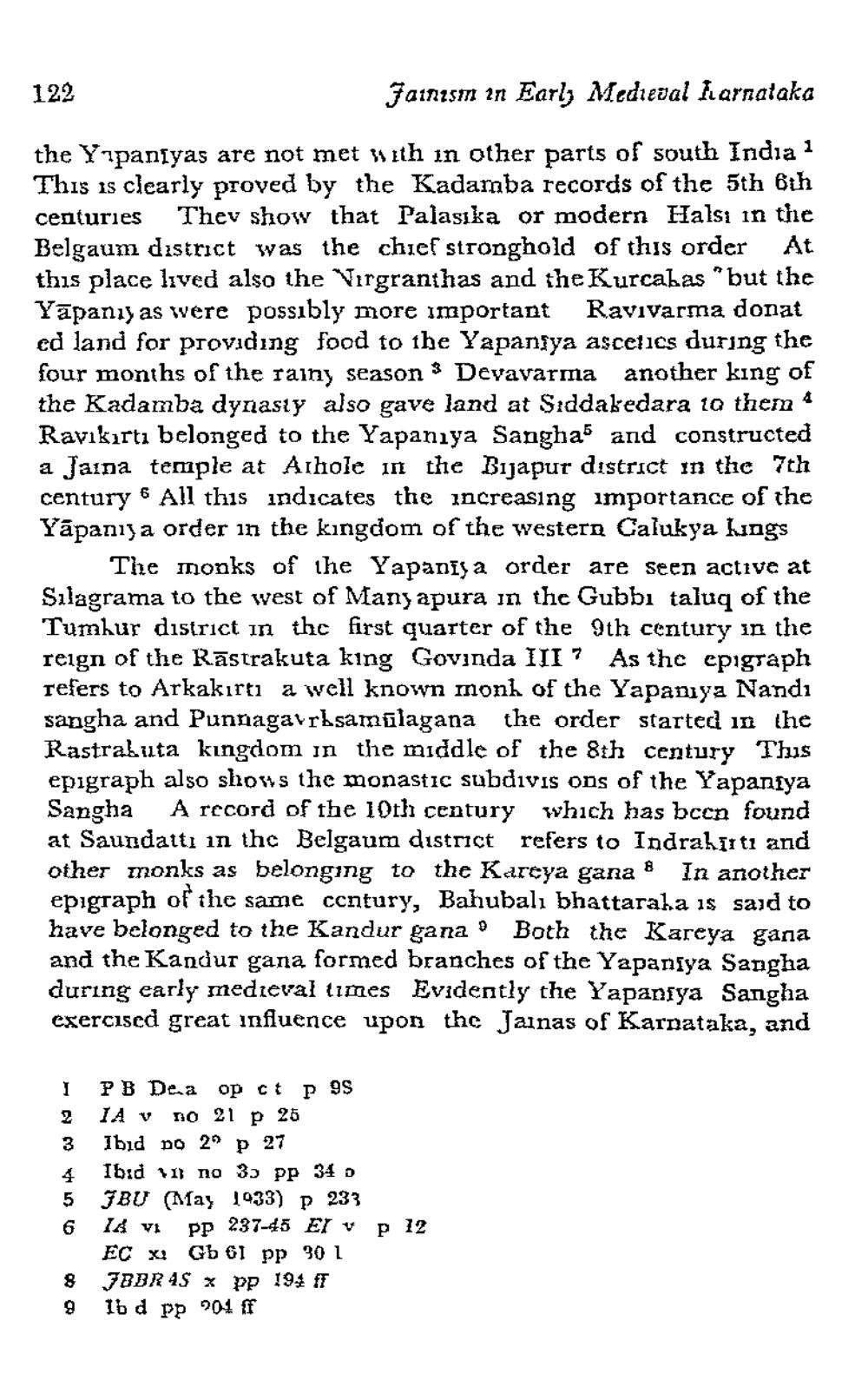________________
122
Jainism 2n Earl, Medieval larnataka
the Yupaniyas are not met with in other parts of south India 1 This is clearly proved by the Kadamba records of the 5th 6th centuries Thev show that Palasıka or modern Halsi in the Belgaum district was the chief stronghold of this order At this place lived also the Virgranthas and the Kurcabas "but the Yapanıy as were possibly more important Ravivarma donat cd land for providing food to the Yapanfya ascetics during the four months of the rainy season 3 Devavarma another king of the Kadamba dynasty also gave land at Sıddakedara 1o them 4 Ravikırtı belonged to the Yapanıya Sangha5 and constructed a Jaina temple at Anhole in the Bijapur district in the 7th century 6 All this indicates the increasing importance of the Yapaniya order in the kingdom of the western Calukya Kings
The monks of the Yapanīsa order are seen active at Silagrama to the west of Many apura in the Gubbi taluq of the Tumhur district in the first quarter of the 9th century in the reign of the Rāstrakuta king Govinda III ? As thc epigraph refers to Arkakırtı a well known monk of the Yapaniya Nandı sangha and Punnagavrbsamalagana the order started in the Rastrabuta kingdom in the middle of the 8th century Thus epigraph also shoss the monastic subdivis ons of the Yapaniya Sangha A record of the 10th century which has bccn found at Saundartı in the Belgaum district refers to Indrahīıtı and other monks as belonging to the Kareya gana 8 In another epigraph of the same century, Bahubalı bhattaraha is said to have belonged to the Kandur gana • Both the Karcya gana and the Kandur gana formed branches of the Yapaniya Sangha during early medieval times Evidently the Yapaniya Sangha exercised great influence upon the Jainas of Karnataka, and
IPB Dea op ct p 98 2 IA v no 21 p 25 3 Ibid po 2o p 27 4 Ibid 11 no 3) PP 34 - 5 JBU (May 1933) p 233
18 vi PP 237-45 EI v
EC X Gb 61 pp 30 1 8 JBBR 45 % PP 194 ff 9 lb d pp 701 ff
ao WN
P
12




